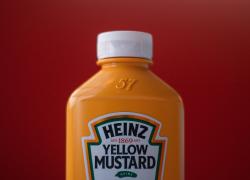
AUA 2025 – J&J scores in a new bladder cancer use
But the company is awaiting pivotal results with TAR-200 in papillary disease before filing.
But the company is awaiting pivotal results with TAR-200 in papillary disease before filing.

Non-muscle invasive bladder cancer is becoming a crowded area, but activity has largely involved carcinoma in situ; now Johnson & Johnson is trying to broaden into the more common setting of papillary-only disease.
On Saturday at the American Urological Association meeting the company reported promising data with its gemcitabine-eluting project TAR-200 in second-line papillary NMIBC. While J&J deemed the results from the uncontrolled phase 2 Sunrise-1 trial “transformative”, it will likely need to wait for readout from the randomised, controlled Sunrise-5 trial before filing.
“The FDA gave us feedback that they’re not going to be accepting, in the papillary population, non-randomised data,” Biljana Naumovic, J&J’s US solid tumour president, told ApexOnco ahead of AUA.
J&J has therefore slipped behind a bladder cancer rival, ImmunityBio, which recently filed its IL-15 receptor agonist Anktiva, alongside BCG, for BCG-unresponsive papillary NMIBC. The submission was based on the phase 2/3 Quilt-3.032 trial, which tested Anktiva plus BCG and Anktiva alone, without a standard-of-care control.
When asked about Anktiva’s chances, J&J oncology’s vice-president of global medical affairs, Mark Wildgust, replied: “You can file anything with the FDA. The question is, is that consistent with what the FDA wants?”
Papillary vs CIS
NMIBC accounts for around 75% of bladder cancers, and around half of these have high-risk disease, the population J&J is targeting with TAR-200, gained through its 2019 acquisition of Taris Biomedical. Initially, the group is focusing on BCG-unresponsive patients, and J&J recently filed for FDA approval in second-line NMIBC with CIS (with or without papillary disease), based on cohort 2 of Sunrise-1.
Approved therapies in this setting include the aforementioned Anktiva, as well as Ferring’s gene therapy Adstiladrin, and Merck & Co’s PD-1 inhibitor Keytruda.
However, CIS accounts for only about 10% of BCG-unresponsive disease, while the less aggressive papillary form makes up the rest. Standard of care for papillary-only disease is chemotherapy, and this and other investigational therapies have produced one-year disease-free survival rates of 45-55%, Wildgust noted.
Indeed, the Anktiva papillary filing was based on a 12-month DFS rate of 55%.
TAR-200 looks like it could do better, based on cohort 4 of Sunrise-1, just presented at AUA. The six and nine-month DFS rates were 85% and 81% respectively – these will need to be maintained over 12 months if TAR-200 is going to set itself apart.
While J&J believes that Sunrise-5 will be needed for approval, Naumovic said J&J could discuss the latest data with the FDA, and that it would “certainly” be discussing them with the writers of the NCCN guidelines.
When asked about the potential for off-label use in papillary NMIBC, Wildgust said this was something J&J wouldn’t promote, but Naumovic added: “Physicians will do what they need to do for their patients.”
Wildgust wouldn’t say when the pivotal papillary Sunrise-5 trial might read out, but noted that it was almost fully enrolled. The study is testing TAR-200 versus chemo, with a primary endpoint of DFS.
Notable trials of TAR-200 in high-risk NMIBC
| Trial | Setting | Regimen | Note |
|---|---|---|---|
| Sunrise-1 cohort 2 | BCG-unresponsive, CIS +/- papillary disease | Monotherapy | Submission begun Jan 2025 under real-time oncology review |
| Sunrise-1 cohort 4 | BCG-unresponsive, papillary-only disease | Monotherapy | First data at AUA 2025; 85% 6-mth DFS rate |
| Sunrise-3 | BCG-naive, papillary & CIS | +/- cetrelimab, vs BCG | Fully enrolled; primary completion Sep 2029 |
| Sunrise-5 | BCG-unresponsive, papillary-only disease | Monotherapy, vs chemo | Almost fully enrolled; primary completion Nov 2030 |
Source: OncologyPipeline.
220













